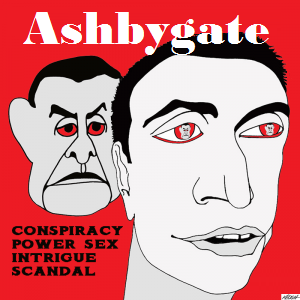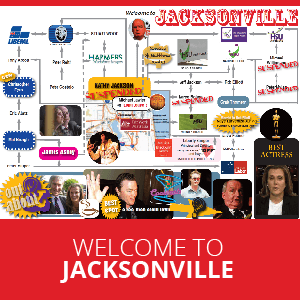A recent Right to Information response shows that the Queensland Department of Environment and Resource Management backs up Simone Marsh's evidence that insufficient information was provided prior to approval of CSG projects. Brian Feeney reports.
CSG WHISTLEBLOWER Simone Marsh knows from personal experience that proper assessment processes were not followed for Queensland’s large CSG projects. Recently-accessed evidence from a Right To Information response (Department of Natural Resources and Mines RTI application 12-330 — not released to the public disclosure log) also supports her claims in Independent Australia about the impact assessment of the QGC Queensland Curtis project.
This RTI response shows that the Queensland Department of Environment and Resource Management (DERM) was not provided with enough information prior to the approval to properly assess potential impacts.
Assessment of the project by the Queensland government was undertaken under the direction of the office of the Queensland Coordinator-General, with specialist advice from other agencies such as DERM. According to the Coordinator-General’s webpage
'Over the past eight decades, the Coordinator-General's role has evolved from being concentrated solely on public works to being principally focused on facilitating and regulating private-sector infrastructure projects.'
The Coordinator-General’s office has broad powers to declare a project “a coordinated project” and to lead the assessment of the project. The office also has a prominent role in facilitating these same projects, raising questions about conflicts between these two roles.
Welcome to new Banana Republic of #CSG-land. Spies, collusion and regulatory failure. #qldpol #auspol #nswpol https://t.co/azDVrg0TIZ
— Lock the Gate (@LockTheGate) January 7, 2016
In itself, having a single government entity to coordinate assessment of large and complex projects makes a lot of sense. While there is also a legitimate role for a government agency to promote large private-sector projects, there is potential for a conflict when that same agency is both ‘facilitating and regulating’ these projects. Effective and transparent public administration requires that where a government agency has several roles, these roles are complementary and do not unduly conflict with each other. This principle does not appear to be reflected in the different roles of the Coordinator-General’s office in relation to large private-sector projects.
The potential for conflict between these different functions is particularly important because of the very large areas approved for CSG projects in the last few years. One project alone covers an area of almost 20,000 square kms extending for more than 300 kms between Roma and Emerald.
Groundwater engineer Professor Philip Pells notes that until recently mining (including CSG)
‘tended to be confined to relatively small areas’... [and consequently,] most impacts from these mines covered limited areas’.
In contrast, he says of current CSG projects (referring specifically to NSW),
‘CSG extraction is a relatively new industry and a form of mining that covers very large areas very quickly. It has the potential to adversely affect groundwater systems over large parts of the state.’
However, it is virtually impossible to provide enough detailed information on the large areas covered by the recent CSG projects to ensure that impacts (like those on groundwater systems) will be at acceptable levels and that there will be a net community benefit from the project.
Coal seam gas in Queensland is owned by the State. Therefore it is reasonable that if CSG is to be extracted, there should be a net community benefit; that is, the benefits outweigh the adverse impacts.
It is, therefore, very relevant that the RTI response documents the following advice from the former Department of Environment and Resource Management (DERM) to the Coordinator-General’s office:
‘there were aspects of the QCLNG project where insufficient information has been provided in the environmental impact statement and supplementary EIS for DERM to assess the potential environmental impacts and likely success of mitigation measures.’
The Coordinator-General’s office subsequently approved the project with conditions requiring this lack of information to be addressed. However, at the time of approval, it was not possible to determine if there would be a net community benefit because the potential environmental impacts were not adequately known.
@SantosLtd no mention of your giant flare at Curtis Island project? #natgas #LNG #CSG #SantosGLNG #ausbiz $STO pic.twitter.com/pV0w5ZFjhv
— No CSG Coonabarabran (@CRAG_Coona) October 22, 2015
A best-practice approach would have been to approve only those stages of the project for which adequate baseline studies (description of the existing conditions in the study area prior to the project) and project scope (what the project would do and where) were provided prior to the approval. Neither of these conditions was fulfilled.
The lack of proper assessment of cumulative impacts (the combined impacts of the gas fields, LNG facility, pipelines, roads etc. in all projects in the same area) is potentially the most concerning aspect of these CSG approvals. In its advice to the Coordinator-General’s office on the environmental impact statement (EIS) and supplementary EIS for the Queensland Curtis LNG project, DERM noted that
‘the cumulative impact assessment of the LNG Facility, gas fields and export pipeline fails to adequately address the cumulative impacts of all the active and proposed gas fields and the export pipelines from other coal seam gas proponents.’
The decision of the Coordinator-General’s office to approve the Queensland Curtis project despite the advice from DERM that insufficient information had been provided prior to approval raises serious questions about the role of the Coordinator-General’s office as regulator of these projects, while at the same time facilitating the projects.
These questions underlie many of the issues raised by Simone Marsh.
You can follow Brian Feeney on his blog here.

This work is licensed under a Creative Commons Attribution-NonCommercial-NoDerivs 3.0 Australia License
Qld’s #CSG: ‘revolving doors’ & ‘regulatory capture’ rampant & out of control. @independentaus digs the dirt! http://t.co/AE32udL7dA #NOCSG
— Sandi Keane (@Jarrapin) April 9, 2015









